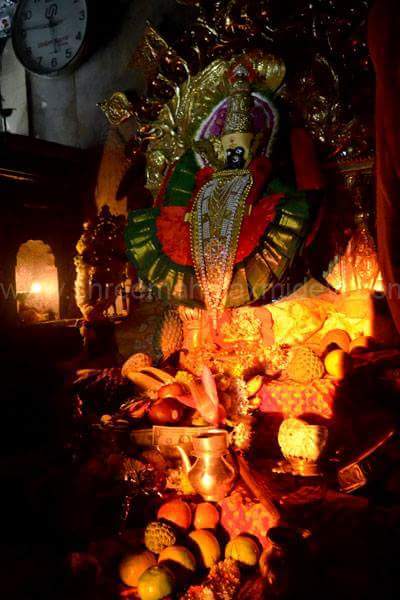With my head in the feet of Goddess Kolhapur MahaLaxmi, Maharishi Mayan, Guru Ganpati Sthapati. And all the ancient architects, sculptors who created Mahalaxmi temple we started this work.
Kolhapur Malaxmi temple is one of the most ancient temples in the Maharashtra & famous for Mahalaxmi Kirnostava. The phenomenon of falling Sun Rays directly on the Deity on a particular day twice in the year.
Since long we were thinking of taking the measurements of Garbhagraha. And to check which angula and hasta is used in this construction.
with th the help of one of my friend Shri. S. Kumar Sir, we got the permission to take the measurements of Garbhagraha of this Temple. We are thankful to him and Gajanan Muniswar Guru for their coaptation in taking the measurements’ of GarbhGriha.
I Rahul Sarode From Parbhani
Shri Prakash Kabade from Igatpuri
Shri Dr. Mallesh Gangaiwar (Ph.D in Remedial Vastu) from Hyderabad
Has Completed this work, to study this ancient knowledge.
Most of historical the information is available on the internet and some books are also available today, but the technical information about the hasta and angula used in the Kolhapur Mahalakxmi temple is not available anywhere and that we are writing here.
Early morning we have started our work, to avoid public rush on wards in the later time.
After taking blessing of Goddess Mahalaxmi we started taking the measurements.
This temple Garbhagraha has three Kosh; Today the Main Garbhagraha where the Deity installed is very small which is 1:1.25 in ratio proportion. The width is 46 angula and the length is 57.5 angula. (Dhanurmusti angula is used for this Garbhagraha).
The perimeter of the Garbhagraha is 207 angula. It is said by the temple authority that the main temple was of wooden and it was burnt in 6 – 7 A. D.
The main Deity (Mahalaxmi) is of One Kishku Hasta in height.
This is the standard measurement unit used by Maharishi Mayaan of South India. We think the original temple which was of wooden in remote, past days must be created by using kishku hasta, but after its renovation, the hasta must have been changed.
Taking Pics of this Garbhagraha were not allowed by authority.
The second Garbhagraha and the third kosh of the Garbhagraha is created by keeping the modular space for walking around the main Garbhagraha.
Wall to wall Measurement of Second Garbhagraha of the Kolhapur Mahalaxmi temple width is 111.66 angula (dhanurmusti) and length is 152.41 angula.
The width of the Garbhagraha door is 48.95 kishku angula.
Intermediate space for walking is provided around the main Garbhagraha. The rectangular extended Sabha Mandapa is inner height is 6 module i.e. 140.95 kishku angula.
The height of Sabha Mandapam where the Abhishek vidhi is done is 3 module i.e. 73.12 Prajapitam angula.
The large stage (Square) on the extreme West of the Sabha Mandapam (otta) is 667 dhanurmusti angula in perimeter. There is a small stage which is 179 dhanurmusti angula in perimeter.
From this study it is proved that, the Module of “Dhanurmusti hasta” is used in Reconstruction of this temple which is most commonly used in South India. The Architect who has designed this plan may have the knowledge of Manushyalaya Chandrika or he maybe Acharya Nilkanthan Musat himself the author of Manushyalaya Chandrika or his some of the disciple.
The orientation of the temple is West facing by deflection of 18 degree toward Southwest from the true West. The architect has very intelligently kept the height of basement and roof in such a way that the sunlight falls directly on the Deity. This phenomenon is known as “Mahalaxmi Kirnostava”
If we observe carefully, the orientation of Meenakshi temple in Madurai is also 18 degree toward Northeast direction, which is exact opposite of the Kolhapur Mahalaxmi Temple, Kolhapur.
This is most important technical similarity of both these temples.
The measurement units in both the temple are also one and the same. From this we can conclude that the architect of both these original temples was must be one and the same person.
As Per Vaastu-shastra, Ayadi sutra is only responsible for creating positive energy which is emanated from the Garbhagraha of the temple.
This energy when communion or Resonates with the person stands in-front of the Garbhagraha, He obviously feels the bliss of Goddess and peace with prosperity.
This is Secret of Ayadi sutra in Vaastu shastra.
